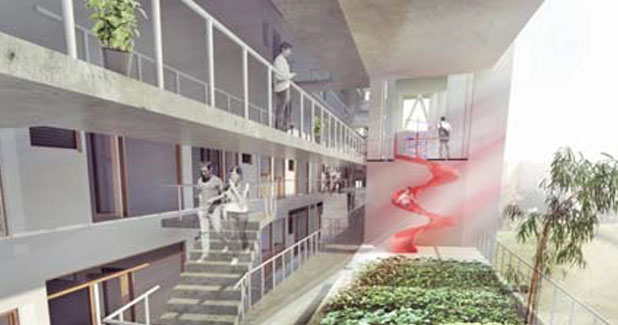Co-lab: Experiments for the City
01 Mar 2016

A city´s smartness is rooted in the welfare of its communities.
Community development is an essential part of urban planning; this holds true not just in the structures that are built for work, stay and play but also in the initiatives that guide urban living.
Ideally, community welfare is a given when one thinks of future cities. However, this is why the humanitarian aspect is not covered in most discussions regarding the future of our cities. In fact, most of the discourse over smart cities almost entirely ignores the community angle; case in point being this definition: A smart city is an emerging conceptual view of a city that promotes the use of ICTs to engage with citizens to develop social and intellectual capital, to make better use of hard infrastructure (physical capital), and reduce usage of environmental capital and support smart growth (sustainable economic development).
The smart city agenda for most cities is no different in most cases. They conventionally cover the following points:
- Smart energy: Advanced infra and distribution grids.
- Smart buildings: Energy-efficient, green, intelligent and feature advanced automated infrastructure.
- Smart mobility: Intelligent mobility, using various integrated technologies and solutions.
- Smart technology: Connects homes, offices, cars, phones and other devices on a single network.
- Smart healthcare: The use of m-health and e-health systems through interconnected medical devices.
- Smart infrastructure: Smart transport networks, water and waste management systems and telecommunications.
- Smart governance: The rolling out of digital services and policies from the government.
However, the true definition of smart in the urban context is often lost. In fact, the typical smart city proposition also poses a number of challenges that have not been addressed, such as:
- A highly centralised system often does not take into consideration public opinion. These systems often require extremely sophisticated urban infrastructure, which cost a lot and offer little or no opportunity for citizen engagement.
- Many of these facilities will be available only to those with high-end devices.
- While there is much-needed focus on the correct use of energy, not much is said about how people will live in and interact with their environments.
- Marginalised sections of the city will only have access to rudimentary healthcare, basic communications and substandard security, environmental management, etc.
Building a community-centered smart city
As Architect Sameep Padora rightly points out, ´The way cities have evolved, there already exists intelligence and smartness embedded into its evolution.´ Cities need to shift priorities and focus on´Smart Communities´ empowered by enabling citizens and social inclusion. These cities will support individual and communal pursuits and ensure community well-being than transforming into cascading markets for infrastructure, services and shelter. This community-centered model could include:
- Community governance, which will provide means for the public to scrutinise municipal budgets and ensure that public funds are being spent in the correct manner for the betterment of communities.
- Community planning will make city planning a collaborative process with citizens at the centre. This will also ensure appropriate delivery of smart services such as mapping of toilets and other public services.
- Community health measures, which will seek decentralised health support facilities and systems, would include public health facilities for low-income areas.
- Community resources will enable administrative decentralisation to ensure responsive systems to local requirements. This will ensure citizen participation in localised decision-making to optimise allocation of resources.
- Community infrastructure facilities will enable citizens to report on various infrastructure issues based on their locations. These systems will allow collective collaboration and inter-individual inputs from different areas.
- Community citizenship will encourage interaction among citizens from the same community on issues of local interest. This information will be directly accessible by governments and aggregated for appropriate action.
- Community dwellings will enable access to dwelling and land use records for rentals, work orders, renter complaints, etc.
There are tremendous opportunities for politicians and government officials who can see past the buzz and the hype of ´smart cities´ to apply ICTs to support citizens as they use this technology to enable themselves and their communities, and in this, transform their cities from the bottom-up.
Related Stories

